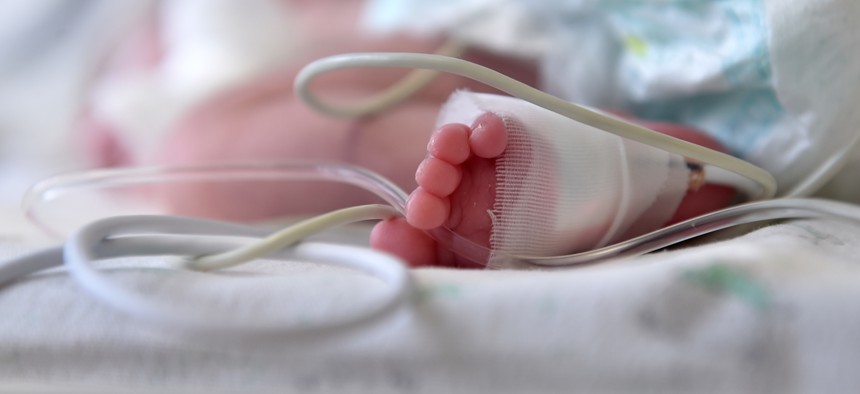Preterm Birth Rates Continue to Rise

Mississippi had the highest preterm birth rate--14.2 percent--in the country in 2018. Shutterstock
The number of babies born before 37 weeks of gestation rose nationally for the fourth consecutive year, according to data from March of Dimes.
The preterm birth rate rose across the United States for the fourth consecutive year, with Alabama, Georgia and West Virginia among the worst states for maternal and infant health.
Nationwide in 2018, just over 10 percent of babies were born before 37 weeks of gestation, up from 9.6 percent in 2015, according to the 2019 March of Dimes Report Card, released Monday. Researchers study the preterm birth rate because it provides insight into the health of both mothers and babies, important indicators for public health in general. Preterm birth is also expensive, costing on average more than $64,000 in medical care, social services and labor market losses, among other things.
“Every American should be alarmed about the state of maternal and infant health in this country, because it is an issue that touches each one of us,” Stacey D. Stewart, president and CEO of March of Dimes, said in a statement. “This is one crisis, not two. The health of moms and babies is powerfully linked, and we need to start treating it as such.”
The nonprofit’s annual report card gives each state a letter grade based on its preterm birth rate, with A signifying a rate less than or equal to 7.7 percent and F indicating a rate greater than or equal to 11.5 percent.
Six states (Alabama, Arkansas, Georgia, Louisiana, Mississippi and West Virginia) and Puerto Rico earned F grades. Mississippi has the worst preterm birth rate in the nation at 14.2 percent, up from 13.6 percent the year before. Louisiana was second at 13 percent, followed by Alabama (12.5 percent), Puerto Rico (11.9 percent), West Virginia (11.8 percent), Arkansas (11.6 percent) and Georgia (11.5 percent).
Oregon was the lone state to earn an A grade, receiving an A-minus for its preterm birth rate of 7.8 percent, the lowest in the nation. Washington and New Hampshire were next at 8.3 percent, then Vermont (8.5 percent), Maine (8.6 percent), California (8.8 percent) and Minnesota (8.9 percent). Generally, the west and northeast fared the best, while Southern states performed worst.
Among large cities, defined as those with the greatest number of live births in 2017, Cleveland has the highest preterm birth rate at 14.5 percent, followed by Detroit (14.3 percent), St. Louis (13.7 percent), New Orleans (13.5 percent) and Baltimore (13.2 percent). Ramapo, N.Y. has the lowest rate (5.4 percent), followed by Irvine, Calif. (5.6 percent), San Francisco (7.8 percent), Irving, Texas (7.9 percent) and Portland and Seattle (both 8.1 percent).
To improve outcomes, March of Dimes recommended a host of nationwide policy changes, including the expansion of Medicaid and other health programs that have proven effective, like group prenatal care.
Kate Elizabeth Queram is a Staff Correspondent for Route Fifty and is based in Washington, D.C.
NEXT STORY: States Try to Ferret Out Unnamed Landlords





